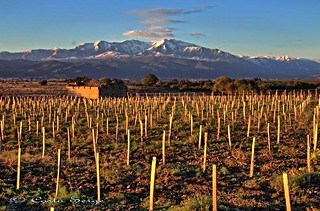
A community engagement mindset can yield immediate results if the selected “community” is people not too unlike current patrons. You can reach thirty-year-old accountants by crafting marketing materials that are focused on them rather than on the organization. That should be a simple and effective switch as Aubrey Bergauer demonstrated at the California Symphony has demonstrated. (Although experience shows that arts organizations have a tough time making that switch.) FWIW, Ms. Bergauer is not alone in having done this, but her work is highly visible and descriptions of it are readily accessible.
That could be enough to “fix” things for the near term. However, the economic and demographic future suggests that more radical change is necessary. And that is going to necessitate developing relationships with new communities, ones with which we have limited connections today. Regular readers know that community engagement is the means by which we can do that.
But often objections are raised about community engagement efforts with new communities because the returns are not immediate. NEWS FLASH: You can’t sell someone an Instant Pot [fill in your own commodity here] if they don’t know what it is, have no idea why they would want one, and, frankly, if they don’t trust you. Success in the sale requires the laying of some groundwork and that takes time.
So, if expanding our base to new communities is necessary, we need an appropriate metaphor for the process. I think I’ve finally stumbled upon something workable. The web page 8 Steps to Owning Your Own Vineyard says the following: “It takes at least two years for a vineyard to produce fruit and four years for the delivery of the first bottle of wine.” If you want to make wine, you need to be willing to wait. There is no shortcut. (Well, yes, the vintner can buy grapes from other vineyards to make wine, but I can’t see any way that part of the metaphor could apply.) And the same principle applies to tapping new funding sources, ones which have not given to the arts in the past.
But the metaphor is even richer. In the late 19th Century, philloxera nearly wiped out wine production in Europe. Over the last two generations, changes in public education, costs/funding, demographics, social expectations, and competition in leisure and creative pursuits has decimated the “root stock” of arts participants. The percentage (and number!) of “inclined to be interested” has plummeted. In the case of philloxera, according to Wikipedia (as a former college professor, I cringe at using this source, but . . . .), “The only successful means of controlling [it was] grafting of phylloxera-resistant American rootstock . . . to more susceptible European . . . vines.” Radical responses were required. And they took time to yield results. I’ll let you write your own blog post about the meaning of that for community engagement in the arts.
Engaging new communities is an existential imperative. We don’t get a choice about the fact that it takes time. Certainly there are interim steps and things to do in the meantime, but if we want to be around for generations to come, we must fully commit to the process while we wait for it to bear fruit. (Forgive me!)
Engage!
Doug
Photo:


[…] If expanding our base to new communities is necessary, we need an appropriate metaphor for the process. I think I’ve finally stumbled upon something workable. – Doug Borwick […]